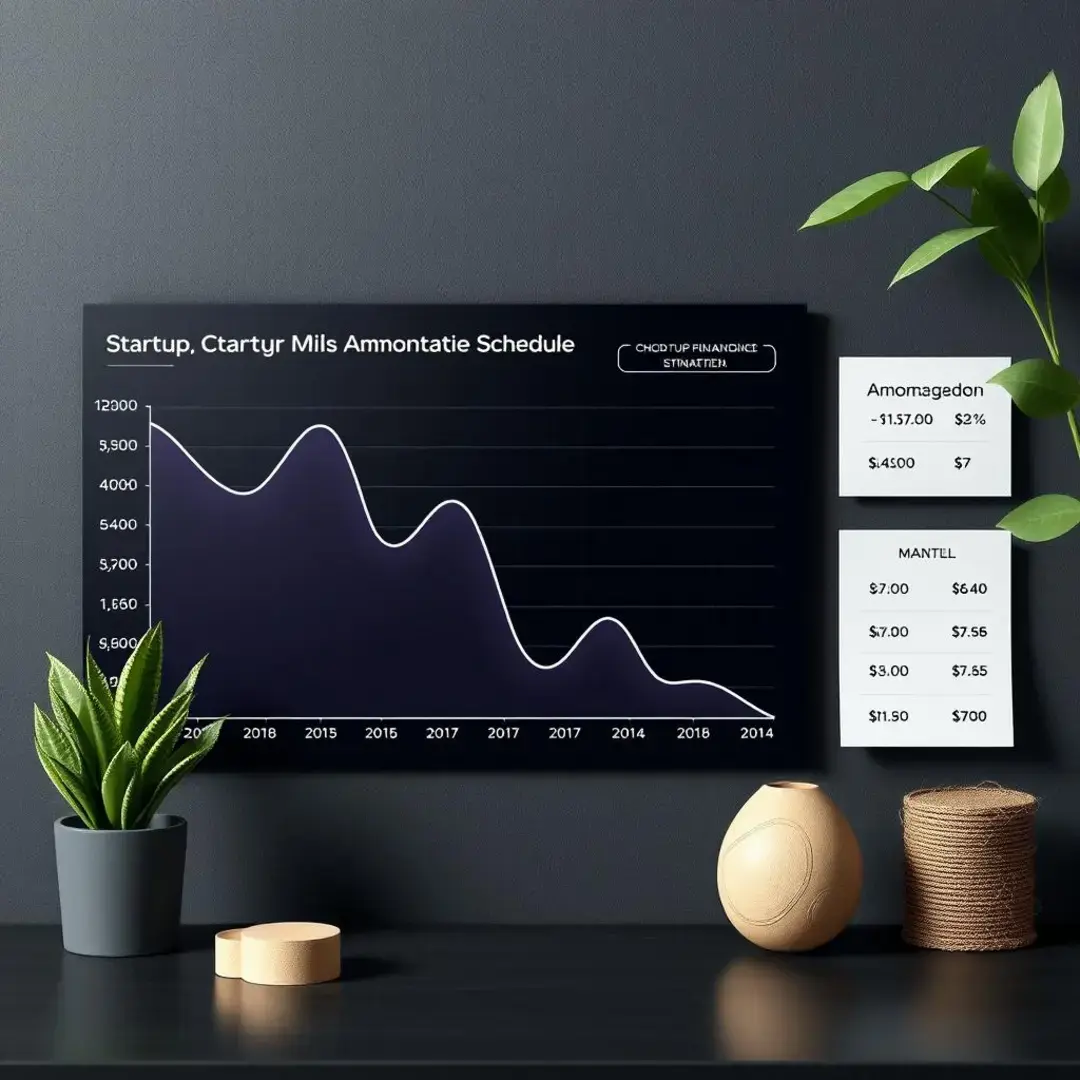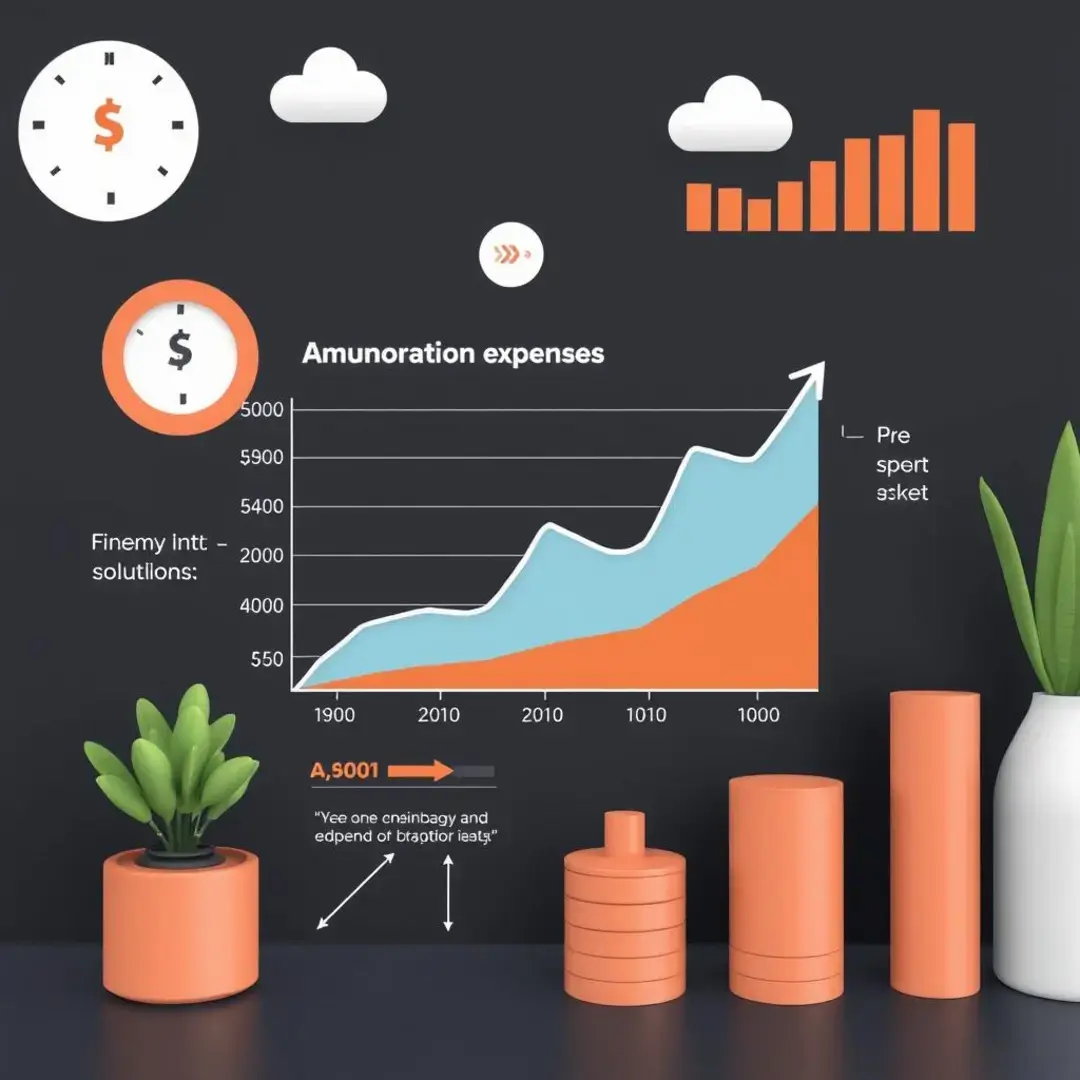Amortization Expense: What It Means in Finance
Understanding Amortization in Depth

The mechanics of amortization
Amortization refers to the gradual reduction of an intangible asset’s value over time. This process involves allocating the cost of the asset in a systematic manner, allowing organizations to recognize expenses evenly throughout the asset’s life. By doing this, firms can maintain a clear picture of their financial health, ensuring that revenues and expenses are matched appropriately. Depending on the specific asset, the amortization period may vary, reflecting the anticipated economic benefits derived from the asset.
There are various methods to calculate amortization expense, including the straight-line method and the declining balance method. The straight-line method spreads the expense evenly over the asset’s useful life, making calculations straightforward and predictable. In contrast, the declining balance method accelerates the expense recognition, allowing businesses to account for a larger portion of the cost in the early years of the asset’s life. Each method serves different financial strategies and reporting needs.
As amortization expenses are recorded on the income statement, they directly influence net income figures. Understanding the positioning of these charges allows businesses to evaluate their profitability accurately. Furthermore, on the balance sheet, amortization reduces the book value of intangible assets, thereby providing stakeholders with valuable insights into asset management practices. Effective tracking of amortization can improve transparency and trust from investors.
Distinguishing amortization from depreciation and depletion
While amortization, depreciation, and depletion all serve similar purposes in expense allocation, they apply to different asset types. Amortization is exclusively related to intangible assets, such as patents and trademarks, while depreciation deals with tangible fixed assets like machinery and buildings. Depletion, on the other hand, accounts for the reduction of natural resources, such as minerals and oil during extraction.
Amortization and depreciation share the characteristic of systematic expense allocation, which assists businesses in aligning expenses with revenues. However, they differ significantly in terms of asset classification. Recognizing these distinctions can help financial analysts and accountants ensure accurate reporting. This differentiation becomes crucial when evaluating the overall fiscal responsibility of a company.
For instance, a company that holds a patent can amortize related costs over the patent’s life span, while a construction firm would depreciate the value of its construction equipment. Similarly, a mining corporation would deplete its investment in a natural resource with every ton of material extracted. This layered understanding provides a better grasp of asset management across industries.
Advanced Applications of Amortization

Amortization of intangible assets
Intangible assets, which can significantly impact a company’s valuation, require careful amortization planning. Examples of such assets include copyrights, trade secrets, and customer lists. Recognizing these assets correctly is essential for accurate financial reporting, as improper amortization can lead to misleading financial results. Businesses must adopt a systematic approach to amortization to reflect their asset’s economic benefits accurately.
Various types of intangible assets may have different amortization treatments. For instance, copyrights have a predefined duration of legal protection, typically lasting the author’s life plus an additional 70 years, which dictates the amortization schedule. Meanwhile, brand names may not have a finite useful life, complicating their treatment and requiring meticulous assessment to determine an appropriate amortization strategy.
Changes in the expected useful life of an intangible asset can necessitate adjustments to its amortization schedule. If a company discovers that a patent will provide benefits for a longer period than originally anticipated, it may extend the amortization period, thereby reducing annual amortization charges. Conversely, if market conditions change and the asset’s value diminishes, firms must reassess amortization rates accordingly, ensuring compliance with relevant Accounting standards.
Amortization and its role in mergers and acquisitions
In the context of mergers and acquisitions, proper allocation of the purchase price to intangible assets is crucial for accurate financial analysis. Upon completion of an acquisition, the buyer must identify and assign value to the acquired intangible assets, such as customer relationships or proprietary technology. This step lays the groundwork for future amortization, which can affect the newly combined entity’s financial performance.
The purchase price allocation process is complex but essential for reflecting an accurate post-acquisition picture. Companies must employ fair value assessments to ascertain the worth of intangible assets, guiding the amortization strategy moving forward. A well-executed allocation ensures that stakeholders understand the integration’s financial ramifications and long-term value generation.
Amortization can heavily influence a company’s reported earnings following a merger or acquisition. Regular amortization expenses may reduce net income in the short term, but they provide a clearer view of profitability in the long run. Activist investors and analysts must remain vigilant in evaluating these figures, as they often signal the underlying financial health of the amalgamated company.
Amortization and Financial Analysis

Analyzing amortization expense for investment decisions
Investors can leverage amortization expense information to make informed decisions about a company’s financial stability and performance. By assessing amortization trends over time, one can gauge how effectively a company is managing its intangible assets and controlling expenses. Subsequently, a high amortization expense may imply that a firm has significant investments in intangible assets, requiring diligent analysis of the assets’ ongoing economic impact.
In evaluating profitability, analysts often adjust net income to exclude amortization expenses, giving them a clearer view of operational performance. Similarly, by factoring amortization into cash flow calculations, stakeholders can better understand a company’s ability to generate cash. Tracking these nuances enables investors to gauge future growth potential and make sound investment decisions.
While amortization provides critical insights, it is essential to recognize its limitations. Solely relying on amortization figures may obscure a fuller view of a company’s performance and health. Analysts must consider a comprehensive array of financial ratios and key performance indicators (KPIs) to ensure a holistic understanding of ongoing operations and strategic positioning.
Amortization and its interaction with other accounting principles
The interconnections between amortization and other Accounting principles can significantly affect financial reporting. One such relationship is between amortization and impairment charges, where a decrease in a tangible or intangible asset’s value results in an additional expense being recognized. Understanding these interactions can provide critical context for analysts when interpreting financial statements.
Should an asset become impaired, companies are required to reassess its carrying value and recognize impairment charges. This reduction in asset value can affect future amortization schedules, emphasizing the need for continual monitoring of market conditions and asset performance. Financial analysts must remain adept at interpreting these changes to assess a company’s long-term viability accurately.
Fair value accounting introduces complexities that influence how companies report amortization. As firms regularly reassess the value of their intangible assets, the alignment between fair value and amortization expenses must be maintained to avoid misrepresentation. Stakeholders must be vigilant in understanding these nuances to accurately navigate their investment analyses and decision-making processes.
Strategic Implications of Amortization

Optimizing amortization strategies for tax planning
Strategically managing amortization can yield significant tax benefits for businesses. By selecting the appropriate amortization method, companies can optimize their taxable income, resulting in substantial savings. For instance, opting for an accelerated amortization method can enhance initial cash flows by reducing tax expenses early in asset utilization, fostering improved financial flexibility for other investments.
Diverse amortization methods have different tax implications that businesses must evaluate keenly. While traditional straight-line amortization maintains consistency, the declining balance method can improve cash flow during preliminary years. Understanding the ramifications of each approach enables firms to craft a robust tax strategy driven by their operational goals.
While tax optimization through strategic amortization is advantageous, companies must balance these approaches with financial reporting integrity. Excessive tax-driven manipulation could lead to scrutiny from regulators, affecting the company’s standing in the market. Therefore, organizations should employ transparent and sustainable strategies that align their financial reporting with tax optimization objectives to foster trust and reliability.
Amortization in a global context
As businesses operate on an increasingly global scale, understanding international accounting standards for amortization becomes essential. Different jurisdictions may apply varying guidelines on how amortization should be calculated and reported. This disparity can complicate consolidation efforts for multinational corporations, demanding a comprehensive understanding of each region’s regulations for effective financial management.
Multinational enterprises must navigate unique challenges related to amortization across different territories. For instance, the need to conform to diverse accounting policies can introduce complexities in valuation and reporting efforts. Effective management of these discrepancies ensures not only compliance with local regulations but also facilitates a streamlined financial reporting process across all market segments.












